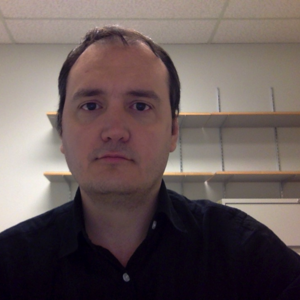Roberto Sotero Diaz
PhD in Physics
Areas of Research
Computational Neuroscience, Neuroimaging, Complex brain networks
Our lab focuses on the development and identification of computational models of brain activity (electrical, metabolic, and hemodynamic) in order to clarify how the signals we record in Neuroimaging (fMRI, PET, DWMRI) and Electrophysiology (EEG) are generated. Our research comprises two complementary approaches: Forward Problem: we develop computational models of the generation of EEG rhythms and fMRI signals, and study how these models can be coupled. These theoretical biophysical models allow us to study the link between metabolism (glucose and oxygen consumption), cerebral blood flow, electrical activity (postsynaptic potentials and action potentials) and the Blood-oxygenation level dependent (BOLD) response, and the specific role of excitation and inhibition in this coupling. Inverse problem: Here we fit to real data, the models we previously developed. We focus on estimating effective connectivity, and other biophysical parameters. The use of a Bayesian model comparison framework provides us with a tool for selecting the best between different plausible models. Additionally, we are interested in the study of the statistical properties of anatomical (using DWMRI data) and functional brain networks (using EEG and fMRI data). Results from these studies allow us to introduce anatomical and functional constraints in the models. For instance, in the generative EEG and EEG/fMRI models we have proposed, the brain areas were connected using an average anatomical connectivity matrix estimated from DWMRI data.
Our lab focuses on the development and identification of computational models of brain activity (electrical, metabolic, and hemodynamic) in order to clarify how the signals we record in Neuroimaging (fMRI, PET, DWMRI) and Electrophysiology (EEG) are generated. Our research comprises two complementary approaches: Forward Problem: we develop computational models of the generation of EEG rhythms and fMRI signals, and study how these models can be coupled. These theoretical biophysical models allow us to study the link between metabolism (glucose and oxygen consumption), cerebral blood flow, electrical activity (postsynaptic potentials and action potentials) and the Blood-oxygenation level dependent (BOLD) response, and the specific role of excitation and inhibition in this coupling. Inverse problem: Here we fit to real data, the models we previously developed. We focus on estimating effective connectivity, and other biophysical parameters. The use of a Bayesian model comparison framework provides us with a tool for selecting the best between different plausible models. Additionally, we are interested in the study of the statistical properties of anatomical (using DWMRI data) and functional brain networks (using EEG and fMRI data). Results from these studies allow us to introduce anatomical and functional constraints in the models. For instance, in the generative EEG and EEG/fMRI models we have proposed, the brain areas were connected using an average anatomical connectivity matrix estimated from DWMRI data.
Supervising degrees
Neuroscience - Doctoral: Accepting Inquiries
Neuroscience - Masters: Accepting Inquiries
Biomedical Engineering - Doctoral: Accepting Inquiries
Biomedical Engineering - Masters: Accepting Inquiries
More information
Contact this supervisor
Complete the following form if you are interested in working with this supervisor for your Graduate Program. All fields are required, unless indicated otherwise.
Collection of personal information
Your personal information is collected under
the authority of section 33(c) of the Freedom of Information and Protection of Privacy Act. If
you have any questions about the collection or use of this information, please visit our
Access to Information page.
